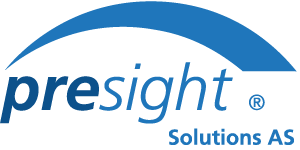In today’s fast-paced world, organizations are increasingly recognising the significance of safety culture.
Safety culture is vital for a company’s health and safety performance. It helps employees understand the importance of safety, leading to better competence, increased safety knowledge, and improved production. A strong safety culture also reduces compensation and insurance costs, motivates employees to learn, and lowers incidents, absenteeism, and staff turnover, resulting in higher productivity and a positive work environment. Prioritizing safety culture shows a company’s commitment to its employees’ well-being, fostering trust and loyalty. Overall, safety culture ensures a safer and more successful workplace.
In the wake of major accidents such as Chernobyl, and Bhopal, it became evident that a lack of safety knowledge, competence, procedures, communication, and commitment played pivotal roles. This realisation led to the development of a multidimensional safety culture model that addresses behavioral, situational, and psychological aspects within organisations.
Harnessing the Power of Safety Culture:
A robust safety culture empowers organisations to establish high standards for safety processes, leading to improved production and a safer work environment. By identifying weaknesses and strengths in health and safety practices, organisations can take proactive measures to enhance overall safety performance. Furthermore, by bridging perception gaps between managers and employees, organisations can foster a sense of support and improve communication channels. Benchmarking safety culture results at various levels enables organizations to gauge their progress and drive continuous improvement efforts.

Introducing Presight:
Measuring Safety Culture for Enhanced Safety Performance.
Recognizing the criticality of measuring safety culture in preventing and mitigating major accidents, Presight has developed an innovative model to assess and capture the overall safety culture score within organizations. While low accident and incident rates may indicate good performance, Presight delves deeper to uncover potential issues that might be lurking beneath the surface. A punitive culture, for instance, can discourage employees from reporting minor incidents or near misses, thereby inhibiting proactive safety measures. Presight’s model helps identify such hidden concerns and empowers organizations to address them effectively.
Key Domains Addressed by Presight’s Safety Culture Model:
Presight’s safety culture model encompasses several key domains, including:
- Management and Employee commitment
- Competency
- Motivation
- Work-related stress
- Presenteeism
- Absenteeism
- Employee empowerment
- Supportive leadership
- Communication
- Informed/Awareness effectiveness
- Policies and Procedures
- Incident-related factors
Each of these domains have their own subgroup subjects as well. By assessing these crucial aspects, organisations gain comprehensive insights into their safety culture landscape and can strategize accordingly.
 Comprehensive Measurement Approaches:
Comprehensive Measurement Approaches:
Presight employs a range of measurement approaches to capture a holistic view of safety culture:
- Survey Designed by Presight: Presight has developed a validated survey that measures the relevant domains mentioned earlier. This survey, tested within the oil and gas industry, exhibits high internal consistency, ensuring the reliability and validity of the items. Regular administration of this survey allows for periodic monitoring of safety culture implementation progress.
- Direct Data Integration: Presight collaborates with organizations to receive data on incident rates, competency levels, sick leave records, and more. This continuous monitoring approach enables real-time assessment of safety culture, facilitating proactive interventions when needed.
- Algorithm Models and Machine Learning: Presight harnesses the power of advanced technologies, such as algorithm models and machine learning, to uncover patterns and insights from observation cards. This data-driven approach enhances the understanding of safety culture dynamics and enables organizations to make data-informed decisions.
- Environmental Considerations: Presight recognizes the impact of extreme weather conditions on safety performance. By monitoring and considering factors like heavy rains, extreme temperatures, wind, and waves, Presight incorporates environmental influences into the safety culture assessment process.
Factors to consider in the analysis:
Putting Weight on What Matters; the Significance of Indicator Weighting.
Presight’s tool also considers that not all domains and subdomains are the same. For example, Presight have previously shed light on a significant factor within one company’s safety culture – bullying at work. While the overall safety culture score of 96% may seem commendable, the revelation that around 10% of employees have experienced bullying raises genuine concerns in this area. Even a seemingly small deviation from a perfect score can be problematic when it comes to bullying, as it directly impacts employee well-being and morale. This finding underscores the importance of giving weight to specific indicators based on their implications and what they measure. Addressing and eradicating workplace bullying should be a top priority to foster a healthier and more inclusive work environment, ultimately bolstering overall safety culture and employee satisfaction.
Presight’s Subdomain Analysis: The inter relationship between subdomains:
In addition to the different weighing of the indicators, Presight’s Safety Culture tool delve into the interrelationship analysis between subdomains, to reveal crucial insights. For example, Presight has previously noted that a more robust employee empowerment domain within the organization yielded significant advantages. This included a notable 4% reduction in reported near misses, indicating the positive impact of empowering employees. Or that the presence of stronger employee empowerment has led to improved communication within work units and among employees, and lastly a remarkable 17% surge in job motivation and satisfaction. This striking correlation underscores the importance of analysing subdomains, providing invaluable insights to facilitate targeted improvements that enhance safety culture and elevate employee well-being.

As organisations strive for excellence in safety performance, cultivating a strong safety culture becomes paramount. Presight’s comprehensive safety culture model and measurement approaches offer a pathway to continuous improvement, enhanced employee engagement, and mitigating potential risks. By leveraging Presight’s expertise and tools, organisations can identify areas for improvement, implement targeted interventions, and foster a safety-first culture that drives success.

 Comprehensive Measurement Approaches:
Comprehensive Measurement Approaches: